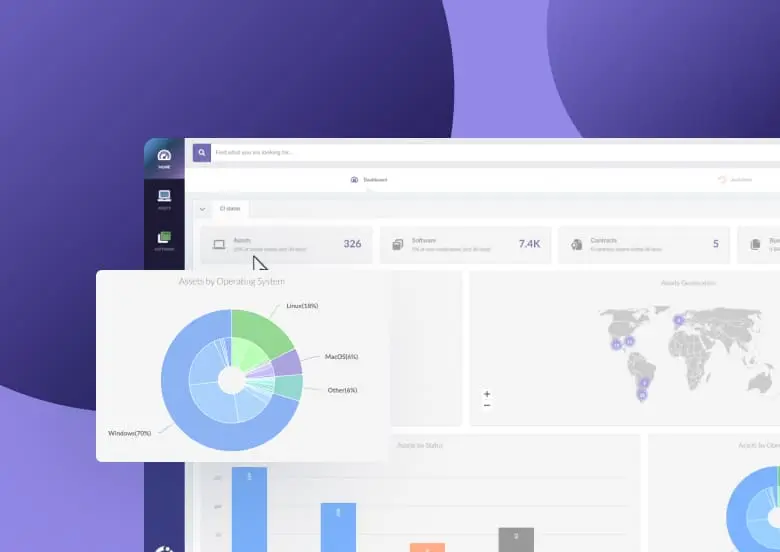Knowledge is one of the most valuable assets in any workplace. And, if you follow Knowledge Management best practices, you can use it to its fullest.
But why do you need Knowledge Management? Doesn't information simply flow between people? Well, it's not that straightforward. You need to ensure that people in your organization have the best tools to share and preserve the information that drives your business forward.
This article will guide you through the key steps to building a robust KM framework, from creating a strategy to maintaining an up-to-date knowledge repository. Let's get started.
Why Knowledge Management matters
Knowledge Management is the systematic process of creating, sharing, using, and retaining knowledge within an organization. It’s not just about storing information—it’s about making sure that valuable insights, experiences, and data are accessible and actionable by those who need them.
The value of KM lies in its ability to improve decision-making, foster innovation, and maintain organizational continuity. When knowledge is well-managed, employees can make informed decisions quickly, drawing on the collective expertise of the organization.
This not only enhances efficiency but also drives innovation by facilitating the flow of ideas and collaboration. Additionally, a strong KM system helps preserve institutional knowledge, preventing valuable information from being lost when employees leave or retire.
Simply put, an effective knowledge management process strengthens the entire organization by making knowledge a shared resource rather than a scattered collection of individual insights.

The Knowledge Management cycle
The KM cycle outlines the stages through which knowledge is developed, distributed, and preserved. Understanding this cycle is key to implementing effective KM practices.
Creation
Knowledge creation is the first step in the KM cycle. This involves generating new insights, whether through research, innovation, or everyday problem-solving. It’s important to have processes in place that capture this newly created knowledge so it can be shared and utilized by others.
For instance, a team might develop a new solution to a recurring problem—documenting this solution immediately allows it to be used across the organization.
Sharing
Once knowledge is created, it must be shared to be valuable. Knowledge sharing can take many forms, from adding information to a knowledge base to discussing ideas in meetings or using collaboration tools. The goal is to make knowledge accessible to anyone who might benefit from it.
For example, if a team discovers a more efficient way to complete a task, sharing this method through a centralized knowledge base ensures that others can adopt it.

Utilization
Knowledge must be actively applied to drive results. This is the step where organizations leverage the accumulated knowledge to enhance their operations and decision-making processes.
It can include applying best practices, optimizing workflows, and addressing specific challenges with the insights gained from the knowledge base.
The goal is to ensure that the knowledge is not just stored but actively used to create value. After all, the effectiveness of a KM is measured by how well this knowledge is put to use in practical scenarios.
Retention
Retention is about keeping knowledge accessible over the long term. This involves organizing and storing information in a way that makes it easy to retrieve and keeps it relevant. Regular updates and maintenance are crucial to prevent the knowledge base from becoming outdated.
A good option for companies could be scheduling quarterly reviews of their knowledge base to update old information and add new insights so that the knowledge remains accurate and useful.

Best practices in Knowledge Management
1. Establish a knowledge management strategy
Before diving into tools and processes, it's crucial to start with a clear knowledge management strategy that aligns with your organization's objectives.
Align with organizational goals:
Knowledge management shouldn't be a separate entity; it needs to support your overall business goals. Whether you're aiming to improve customer service, drive innovation, or streamline operations, your KM initiatives should contribute directly to these objectives.
Define clear objectives:
Setting specific, measurable goals for your KM efforts is essential. Are you looking to reduce the time it takes to resolve customer issues? Improve employee onboarding? Whatever your focus, defining clear objectives will help you measure success and keep your KM efforts on track.

2. Create a centralized knowledge repository
A centralized knowledge repository is the backbone of any effective KM system.
Implement a knowledge base:
Choose a platform (an Enterprise Service Management solution is a good option here) that allows easy access to information and organizes it in a way that makes sense for your team. The right knowledge base can be a powerful tool, helping employees quickly find the information they need, when they need it.
Categorization and tagging:
Organizing knowledge is just as important as gathering it. Effective categorization and tagging within your knowledge base articles make information easily retrievable. Think of it as creating a well-organized library where every piece of knowledge has its place, making it simple for users to find what they're looking for.

3. Foster a knowledge-sharing culture
A KM system is only as good as the willingness of employees to share their knowledge.
Encourage collaboration:
Promote a culture where teamwork and open communication are valued. When employees feel comfortable sharing their insights and experiences, your knowledge base becomes richer and more valuable.
Reward knowledge sharing:
Recognize and reward those who actively contribute to the knowledge base. This could be through formal incentives or simply acknowledging contributions publicly. The goal is to make knowledge sharing a part of the organizational DNA.
4. Provide training and resources
Even the best KM system will fall short without proper training and resources.
Conduct workshops and training sessions:
Train your employees with both the soft and hard skills they need to contribute effectively to your KM system. Workshops and training sessions can demystify the process, making it easier for everyone to get involved.
Utilize technology:
Leverage tools and software that facilitate knowledge sharing. From collaborative platforms to content management systems, the right technology can make all the difference in how efficiently knowledge is shared and accessed across your organization.

5. Regularly update and maintain knowledge
A stagnant knowledge base quickly becomes obsolete. Regular maintenance is key to keeping your KM system relevant.
Establish review processes:
Schedule periodic reviews of your knowledge base to ensure the information remains accurate and up-to-date. This could involve setting up a dedicated team to manage updates or integrating review responsibilities into existing workflows.
Encourage feedback:
Create a system that allows users to suggest updates or improvements. Feedback from those who use the knowledge base daily is invaluable for spotting gaps and ensuring the content stays relevant.
6. Measure and analyze KM effectiveness
Finally, you need to measure the impact of your KM efforts to understand what’s working and what needs improvement.
Set key performance indicators (KPIs):
Identify the metrics that will help you assess the effectiveness of your KM practices. Whether it's the speed of information retrieval, the frequency of knowledge base usage, or the accuracy of information, KPIs will give you a clear picture of your KM system’s performance.
Use feedback for continuous improvement:
Don't just collect data—use it. Analyze the metrics and feedback you receive to refine your KM strategies continuously. This iterative process will help ensure that your knowledge management practices evolve with the needs of your organization.

Frameworks for Knowledge Management
We've talked about some best practices in Knowledge Management, but if you really want to dive deeper, we recommend exploring some frameworks. These frameworks provide a structured approach to managing and leveraging knowledge within your organization.
ITIL
ITIL is one of the most widely adopted frameworks for IT Service Management, and knowledge management is a crucial practice within this framework.
ITIL proposes a structured approach to capturing, sharing, and managing knowledge to support service delivery and decision-making. At the core of the ITIL Knowledge Management practice, we find that: "the right information is delivered to the right place or person at the right time."
For instance, an IT support team using ITIL would have a knowledge base where common issues and their resolutions are documented, allowing faster incident resolution and consistent service quality.
Knowledge-Centered Service (KCS).
KCS focuses on creating and maintaining knowledge in the context of customer service and support. It emphasizes the integration of knowledge creation and use into the problem-solving process, ensuring that knowledge is captured and reused efficiently.
This framework is particularly valuable for organizations looking to improve the quality and efficiency of their customer support operations.
SECI Model (Socialization, Externalization, Combination, Internalization)
Developed by Ikujiro Nonaka and Hirotaka Takeuchi, the SECI model is one of the most influential frameworks in KM. It explains how tacit knowledge (knowledge that is personal and hard to formalize) can be converted into explicit knowledge (knowledge that is documented and easily shared).
This model is particularly useful for understanding how knowledge flows within an organization and how to facilitate the conversion of individual insights into organizational knowledge.
APQC Process Classification
The American Productivity & Quality Center (APQC) provides a comprehensive KM framework that outlines the processes involved in managing knowledge effectively.
This framework is structured around a set of core KM activities, such as knowledge creation, knowledge sharing, and knowledge application. It also includes benchmarking tools that organizations can use to assess their KM maturity and identify areas for improvement.

Essential books on Knowledge Management
"The Knowledge-Creating Company" by Ikujiro Nonaka and Hirotaka Takeuchi
This book was published in 1995 and is renowned for its exploration of how Japanese companies manage knowledge to foster innovation and competitive advantage.
It introduces the SECI model (Socialization, Externalization, Combination, Internalization) and provides case studies from various companies to illustrate effective knowledge creation and sharing practices.
Reading this book can give you a deeper understanding of the theoretical foundations of KM and practical insights into how to apply these concepts in your organization.
"Working Knowledge" by Thomas H. Davenport and Laurence Prusak
"Working Knowledge" offers a practical approach to KM, focusing on the challenges organizations face in managing knowledge and how to overcome them.
The authors provide real-world examples of KM in action and offer strategies for creating a culture of knowledge sharing. This book is a great resource for anyone looking to implement KM practices in a way that aligns with their organization’s specific needs. This book was also published in the nineties, and it continues to be relevant in discussions about KM
"Knowledge Management in Theory and Practice" by Kimiz Dalkir
Last but not least, Kimiz Dalkir’s book is a comprehensive guide to KM that covers both the theoretical and practical aspects of the field. It’s particularly useful for those who want to understand the different models and frameworks in KM and how to apply them in real-world scenarios. The book includes case studies, exercises, and tools that can help you develop a KM strategy that works for your organization.
Conclusion
Developing effective Knowledge Management practices is an ongoing process that requires thoughtful planning and continuous improvement.
A clear KM strategy, a centralized repository, and fostering a culture of knowledge sharing can be the keys to turning your organization’s knowledge into a powerful asset.
The resources and tools mentioned here can further enhance your KM efforts, helping you build a system that preserves valuable information and makes it actionable and accessible.
















